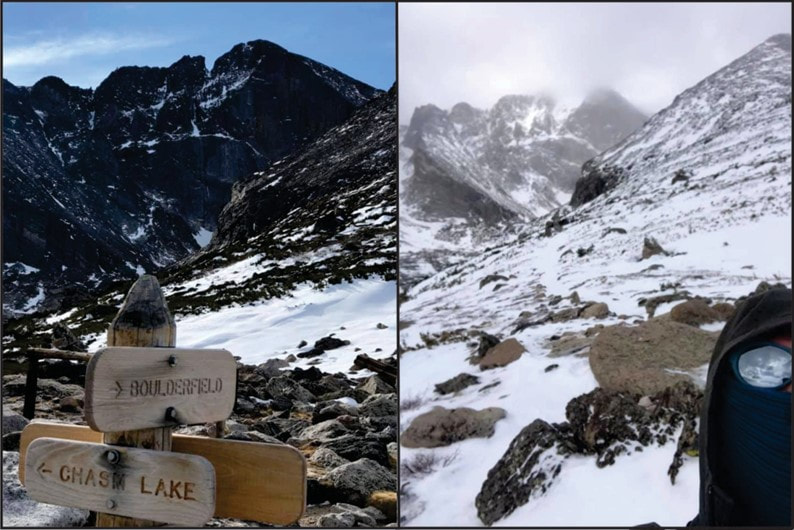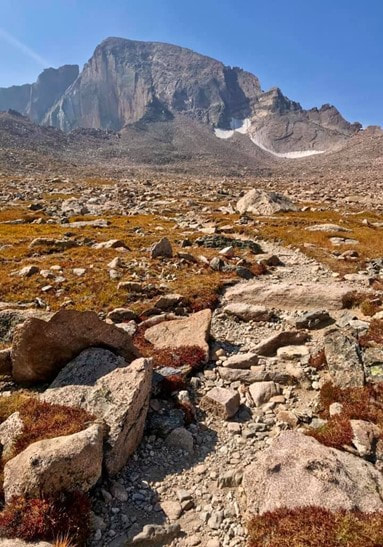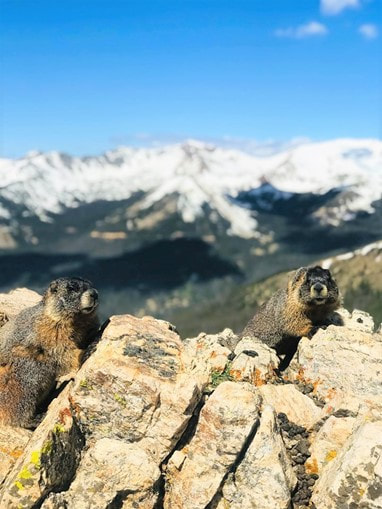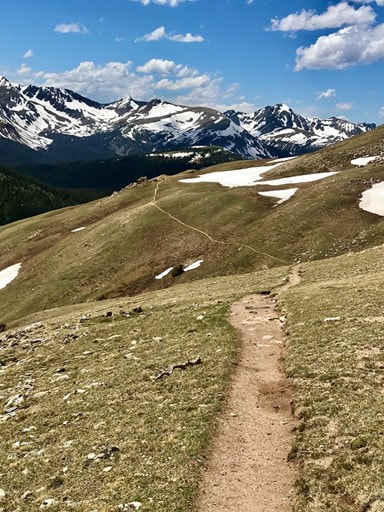|
Simon Vogt's vlogs of his summit of Longs Peak in September, 2021, and above Dream Lake earlier this year. story by Barb Boyer Buck, photos & videos by Simon Vogt Colorado resident Simon Vogt has summited 57 of the state's 14-ers (mountains over 14,000 feet in elevation); he only has one left: Culebra Peak in the Sangre de Cristo range. Mountaineering in the high peaks of Colorado's Rocky Mountains has become a metaphor for the new life he is developing for himself: one of sobriety and focus. “The summit is the goal, but it's not the reason,” he said. Since choosing sobriety three years ago, Simon has turned to high places of Colorado (and other states) for solace and a sense of accomplishment. This attitude hasn't been Simon's strategy his entire life, however. He was born and lived in Germany for eight years after which his family moved to New York. He moved to Colorado for college in the early 1990s. “Colorado is the first place I developed a real interaction with the outdoor world: climbing, hiking, and mountain biking,” he said. But he also encountered tumultuous problems with the law, alcohol, and drugs. His naturally impulsive and reckless nature got him into some real trouble while he was using and drinking. “I almost died many times,” he said citing a week-long coma from a heroin overdose in 1994 and daring mishaps while bouldering with friends. “I was also shot at several times and stabbed as a result of poor choices,” he said. “It was the world I was living in at the time.” A couple of years after that, he almost died again. “I quit drinking after I went to the emergency room for pancreatitis. It felt like I was on my deathbed.,” he said. “Being able to get up from that bed and walk out of the hospital was the beginning of a new start, and a miracle.” He faced an immediate test right after getting sober; his boss died, he got evicted from his apartment, and his girlfriend left him. He started living in his truck. In those uncertain days, Simon started taking walks at night because he couldn't sleep. “I got back into hiking more and more after that,” he said. Simon likes to hike alone, especially on his longer adventures, but takes care to be sure he is prepared. His naturally impulsive personality no longer turns reckless, as he cares for his well-being now. He pushes his limits, but he doesn't exceed them. “It's nice to be alone, but running into someone is reassuring,” he said about seeing others on the trail. “It's a secret link between you and them, a camaraderie of being with someone within a 10-mile radius. “ “Mountaineering is very peaceful, meditative, and an inner experience,” he said. “There's a dichotomy between being deep inside of yourself, examining your consciousness from a little further back in your mind, juxtaposed with the physical challenges of the outside environment. “Emotionally, it puts me very much at ease, I go out there for the feeling of solitude, to get more of an inner connection by having that outward experience. This is when I thrive and feel alive.” On his adventures, Simon also finds he can communicate quite easily with what he understands as God; this has been one of his touchstones since achieving sobriety. “Turning your life over to a higher power, trusting that things are going to be OK, any way it turns out-- that is the key,” he said. “You have to let things go and not stress or be anxious about things you don't have any control over, like trail conditions or the weather, or what you encounter at work. “Once you see yourself as connected to a greater path in life it's easier to enjoy the moment.” The gratitude he feels while on these trips reinforces this connection. Suddenly, he is no longer the outcast and trying to fit himself into a shape society asks him to fill. These days, Simon works as a freelance contractor and carves out considerable time for traveling and mountaineering. While standing on these mountaintops alone, he sees these moments as wonderful gifts that are uniquely for him. “I experience a rush of endorphins, that weird chemical euphoria that I used to seek out artificially,” he explained. “I become grateful for being a human on this planet, for having legs to get me to the summit.”
Simon is continuously honing his preparation for hiking; after every trip he has figured out a way to lighten his pack a bit more and reduce the amount of water he carries. “When climbing a mountain, you should only expend about ¾ of your energy climbing to the summit, you need to reserve about ¼ for the return,” he counseled. “You need to find your own path and whatever path that is, keep moving. Keep moving even if it's not forward, sometimes you have to go sideways. As long as you keep going – take another step and then another and another. “I apply the same things in hiking that I apply in recovery; it's not necessarily getting to the mountain top that's the important thing. In life, you're never like 'I made it!' You never truly reach that point. You're never done, it's never over. Once you get to the top you have to get back down.” Taking responsibility for his actions, along with expecting setbacks on the journey is essential to Simon's new outlook on life. “If you can use those setbacks and disappointments not as a discouragement but as a motivator, you succeed,” he said. “They are learning experiences and that's what it takes to improve. You have to expect to have problems and run into unforeseen things – in life and in hiking.”
0 Comments
Leave a Reply. |
Categories
All
|
© Copyright 2025 Barefoot Publications, All Rights Reserved






